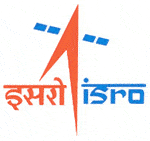|
 Bangalore: India is likely to launch a new communication satellite from its spaceport at Sriharikota which will augment existing capacity and services in the field. Indian Space Research Organisation scientists will give the go-ahead for the launch only after a mission-readiness review. Bangalore: India is likely to launch a new communication satellite from its spaceport at Sriharikota which will augment existing capacity and services in the field. Indian Space Research Organisation scientists will give the go-ahead for the launch only after a mission-readiness review.
The launch window is 10-20 December. The satellite, GSAT-5 Prime, is to be launched on the Geosynchronous Satellite Launch Vehicle (GSLV-F06). The GSAT-5P carries 24 normal C-band and 12 Extended C-band transponders to augment communication services in areas like television broadcasting and telecom. Positioned at 55 deg East longitude GSAT-5P will have a designed mission life of 12 years The satellite weighs 2330 kg and has payload power requirement of 1700W. Satellite configuration and equipment panel layouts have been finalised as are payload subsystems and other subsystem packages. Meanwhile, preparations are in full swing for the launch of the PSLV-C16 which is slated to carry India's advanced remote sensing satellite Resourcesat-2 as well as auxiliary satellites Youthsat and X-sat, sometime close to the end of December. Resourcesat-2 is intended to replace Resourcesat-1, which has been orbiting since October 2003. Though it has outlived its designed mission life of five years, ISRO sources said it continues to work satisfactorily. "Resourcesat-2 is a follow-on mission to Resourcesat-1 to provide data continuity. Suitable changes including miniaturisation in payload electronics have been incorporated in Resourcesat-2", ISRO officials said. Resourcesat's images are being used for advanced applications such as vegetation dynamics, crop yield estimates and disaster management support. Youthsat, a micro satellite, is a participatory scientific mission with one payload from Russia and two from India, carrying scientific payloads with participation from universities at graduate, postgraduate and research scholar level. X-sat is the first locally made satellite in Singapore and has been designed and built by Nanyang Technological University (NTU).
|